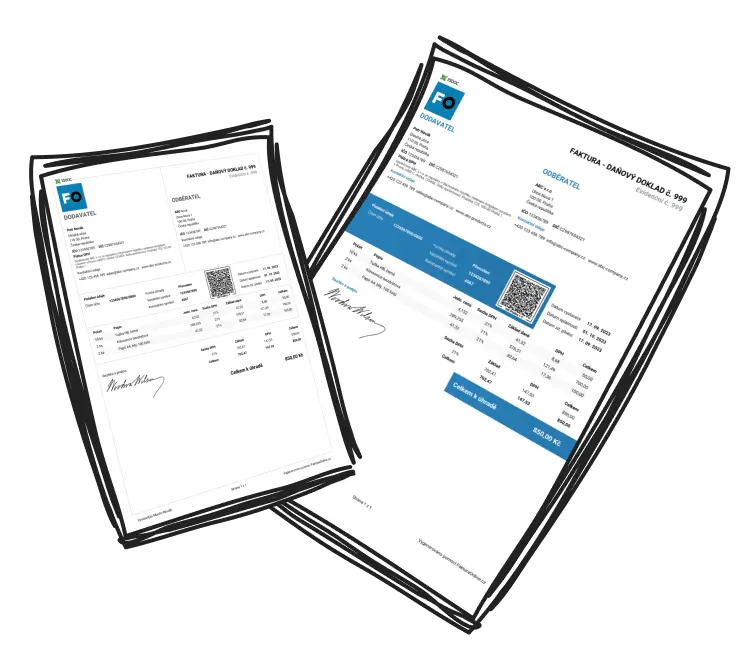What Is a Proforma Invoice?
A proforma invoice is issued as a preliminary document before finalizing the official sale to the buyer. It serves as a detailed estimate, providing information about goods or services, including descriptions, quantities, prices, and terms. However, it is not legally binding and does not serve as a demand for payment.
This type of invoice is particularly important in international trade. It helps buyers understand the total costs upfront, including potential duties, taxes and shipping fees, so they can plan accordingly. While highly informative, a proforma invoice does not create any legal obligation for either party to complete the transaction.
How Do You Use a Proforma Invoice?
Proforma invoices are versatile and can be used in various ways:
Facilitate customs clearance: Facilitate customs clearance using a proforma invoice as it is essential in international trade to expedite customs procedures.
Aid in negotiations: Serves as a tool to discuss terms and pricing with buyers.
Help secure financing: Supports buyers in obtaining bank approval for transactions or initiating Letters of Credit.
Prepayment preparation: Allows buyers to make informed decisions about advance payments.
Internal approvals: Useful for businesses that need cost breakdowns for purchase approval processes.

Tip
Use a proforma invoice to provide a buyer with a clear, upfront estimate when negotiating terms. This transparency can help avoid misunderstandings and enhance trust.
When Should a Proforma Invoice Be Issued?
A proforma invoice should be issued early in the transaction process, ensuring preliminary details have been clarified. It is ideally used when a buyer:
Requests a detailed cost breakdown.
Needs documentation for customs, such as import licenses.
Seeks clarity during sales negotiations to finalize terms.
Whether to provide payment terms or assist with international procedures, timing plays a key role in ensuring a smooth transaction.
What Are the Key Elements of a Proforma Invoice?
A well-constructed proforma invoice should include the following essential details to ensure clarity and effectiveness:
Document Label: Clearly marked as "Proforma Invoice."
Buyer and Seller Contact Details: Full names, addresses, and contact information for both parties.
Itemized Breakdown: Detailed descriptions of goods/services, including quantities, specifications, and part numbers.
Pricing Information: Unit prices, total costs, estimated taxes, and any shipping or handling fees.
Payment Terms and Delivery Schedule: Guidelines for payment deadlines, accepted payment methods, and shipment details.
Validity Period: A statement indicating how long the terms and pricing in the proforma invoice remain valid.
Special Instructions: Additional notes such as return policies, custom handling requests, or Incoterms for international trade.

Example
Imagine a proforma invoice for an export order; it might look like this:
- Proforma Invoice Label: PROFORMA INVOICE
- Seller: XYZ Exporters, Address, Contact Info
- Buyer: ABC Importers, Address, Contact Info
- Goods: 1,000 units of Product X, Dimensions, Specifications
- Total Cost: $25,000 (incl. $2,000 for shipping)
- Payment Terms: 50% advance, remaining upon delivery
- Validity: Offer valid for 30 days from issue date
Including these details ensures clarity and smooth communication.
How Does a Proforma Invoice Differ From a Regular Invoice?
Comparison Table
Feature |
Proforma Invoice |
Regular Invoice |
|---|---|---|
Purpose |
Provides an estimate of goods/services and costs |
Requests payment for delivered goods/services |
Legal Binding |
Non-binding; no payment obligations created |
Legally binding; buyer must pay the specified amount |
Timing |
Issued during preliminary stages of a transaction |
Issued after goods/services are delivered or terms finalized |
Taxation |
Shows estimated taxes |
Includes actual tax amounts payable |
Use Case |
Used for negotiation, customs, or financing procedures |
Serves as final proof of transaction for accounting |
Understanding these distinctions between a regular invoice and a proforma invoice is crucial for avoiding confusion and ensuring proper use.
Now that you know what a proforma invoice is and how to use it, you can leverage this essential tool to streamline transactions and improve communication with buyers.


